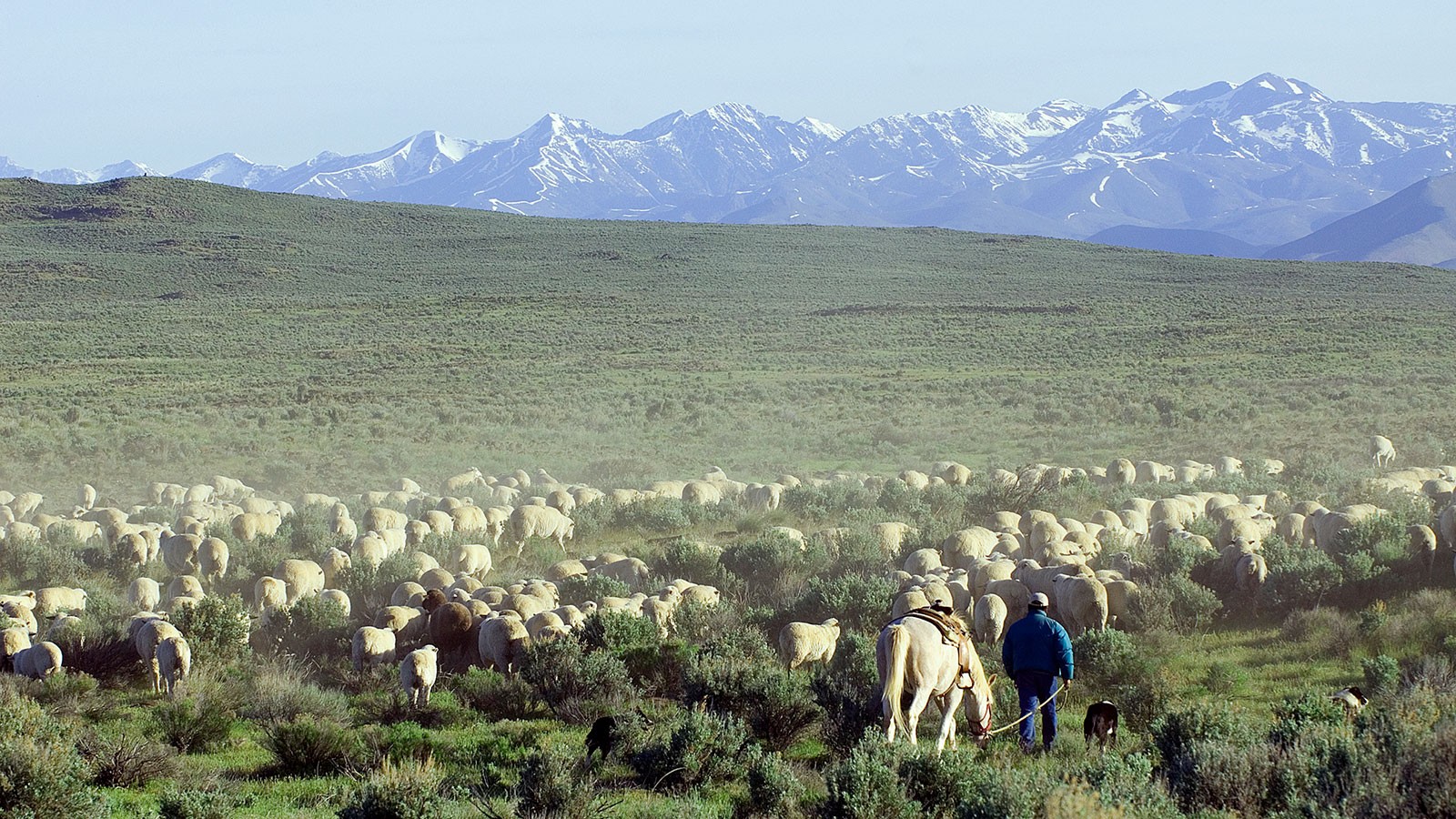Standing on Shared Ground: New Book Explores Foundations of Rangeland, Wildlife Management
By Lael Gilbert |
Sheep move through public lands near Shoshone, Idaho. (Photo Credit: Bureau of Land Management)
It was a prodigious task. One that required deep expertise, thousands of hours of effort and a skilled team that included, among others, 12 rangeland and wildlife professionals affiliated with the Quinney College of Natural Resources. The new book, Rangeland Wildlife Ecology and Conservation, is a thousand-page, open-access tutorial and reference offering professionals and advanced students perspective on myriad aspects of rangeland and wildlife management.
But what really makes the book unique, said editor Dave Dahlgren from the Department of Wildland Resources, is the way it acknowledges the literal and philosophical ground that wildlife ecologists and rangeland professionals share. Finding the intersection between these groups isn’t always immediately intuitive, he said.
Some wildlife professionals view rangelands as just habitat for wildlife, but these vast landscapes provide critical ecosystem services for humans and significant economic benefits for local communities, Dahlgren said. So how do you move people with laser-tight focus on wildlife to build a wider perspective? And on the flipside, how do you help rangeland managers understand and accept the important role wildlife conservation has on these lands?
Creating that shared space begins with things as basic as ensuring a common understanding of the words you use when you are talking about the resources, said Eric Thacker, a lead author in the book, and member of the Department of Wildland Resources. Terms like “habitat” and “cover” have different definitions, depending on your background, and can create confusion and conflict when used at odds with each other.
“Both rangeland and wildlife management were born out of necessity in the early twentieth century to protect dwindling resources. They followed parallel paths. But tradition and biases sometimes create misunderstanding between the groups,” Thacker said. “Really, the two professions have more in common than they have differences.”
Finding that common ground is increasingly necessary for management success on rangelands, said Dahlgren. The issues specific to range landscapes are becoming more and more dominated by concerns over wildlife — from sage-grouse conservation to carnivore conflicts with cattle. Maintaining healthy ecosystems has always been critical to keep rangelands functioning, whether to benefit the natural system or the people that rely on them.
“It’s time both professions work from common ground,” Dahlgren said.
Conservation issues on rangelands are also growing in prominence and complexity. The caretakers of these lands — managers, wildlife biologists, and others — are finding that they need to work together and rely on more holistic approaches to find success.
This inevitably includes a solid foundation of how rangelands work, which is supported in the first section of the book. But the meat of the material is geared toward building a shared understanding of the ways animal species use rangelands. The authors included both iconic species like mule deer, pronghorn and sage grouse, as well as species whose impacts are less well-understood on the system — such as pollinators, amphibians, birds of prey and prairie dogs.
“We’ve taken a fairly novel approach,” Dahlgren said. “There’s already been a lot written about pollinators and carnivores, but not necessarily from a rangeland perspective.”
The publication, edited by Dahlgren, Lance McNew from Montana State University, and Jeffrey Beck from University of Wyoming, is offered open access, allowing anyone to download a chapter, or even the complete manuscript, at no cost. Dahlgren believes the material has potential to be a go-to reference for a gamut of rangeland management issues. Offering the publication open access ensures that the material is widely accessible.
“We’ve tapped the premiere expertise on these topics for hundreds of western species,” Dahlgren said. “We got the cream of the crop with our overall authorship, and it was great to see USU’s presence and leadership within that group. We want to be sure that this knowledge is available to those who can most use it.”
WRITER
Lael Gilbert
Public Relations Specialist
Quinney College of Natural Resources
435-797-8455
lael.gilbert@usu.edu
CONTACT
Dave Dahlgren
Professor
USU Department of Wildland Resources
435-881-1910
dave.dahlgren@usu.edu
TOPICS
Faculty 308stories Land Management 123stories Books 74storiesComments and questions regarding this article may be directed to the contact person listed on this page.







